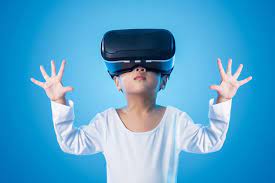
Virtual reality (VR) technology has transcended its entertainment origins to become a serious tool in disaster preparedness and response. As natural and man-made disasters continue to pose significant risks worldwide, innovative methods are required to mitigate these dangers effectively. VR offers an immersive platform that could dramatically enhance how we prepare for and stay safe during disasters.
Firstly, VR can be used for education and training. Traditional disaster drills are useful, but they can’t replicate the full range of sensory experiences or the unpredictability of real emergencies. VR simulations can immerse users in highly realistic scenarios that mimic the conditions of earthquakes, floods, hurricanes, or industrial accidents. For example, firemen can experience the disorientation of navigating a smoke-filled building without actual risk. It is not just professionals who stand to gain; ordinary civilians can also participate in virtual drills to learn essential survival skills through lifelike practice.
Secondly, it has potential in planning and designing safer infrastructure. Engineers and architects can use VR to visualize buildings and urban landscapes under various catastrophic conditions. Virtual walkthroughs would enable them to identify potential structural weaknesses or design elements that could be improved to maximize safety during a disaster.
Another key application is in disaster response coordination. VR can create a 3D model of the affected area using real-time data which rescuers can interact with via VR headsets, improving their understanding of the terrain and facilitating strategic planning. This could be crucial when navigating debris or identifying the most severely affected zones that require immediate attention.
Moreover, post-disaster recovery efforts can benefit from VR as well. Mental health professionals are exploring VR’s potential for treating post-traumatic stress disorder (PTSD) among survivors by gently exposing them to simulated scenarios that resemble their trauma. This controlled exposure can help individuals process their experiences in a safe environment, potentially speeding up recovery times.
Despite these promising applications, the adoption of VR in disaster management faces challenges such as cost of equipment, need for technical expertise, and ensuring simulations are realistic enough to be useful while not so intense as to cause trauma themselves.
In conclusion, while no technology can offer absolute safety during disasters, VR holds significant promise for improving preparedness, response, mitigation efforts—and ultimately saving lives. As this technology continues to mature and become more accessible, we may find ourselves better equipped than ever before to handle the unexpected challenges Mother Nature throws our way.
